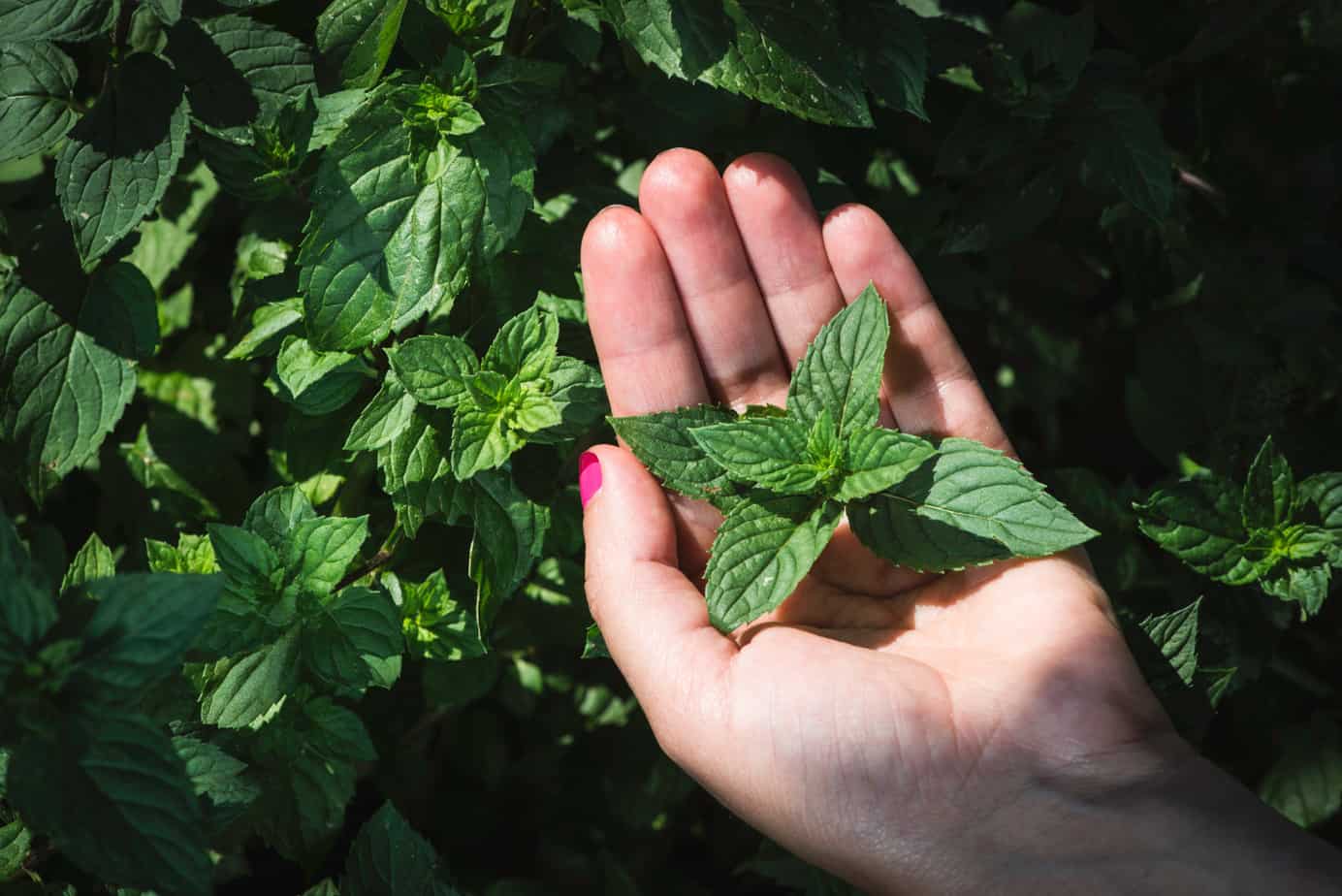If you notice your mint leaves turning yellow, it could be due to a few different reasons. Most commonly, it is simply due to stress from the environment or from too much or too little water. If the leaves are only lightly yellowed, this is usually not cause for concern and the plant will likely recover on its own.
However, if the leaves are significantly yellowed or if they start to fall off, it could be a sign of a more serious problem.
Mint leaves are turning yellow for a variety of reasons. The most common reason is simply because the plant is not getting enough nitrogen. This can be caused by several things, including over-fertilizing with a high-nitrogen fertilizer or not fertilizing at all.
Other causes of yellowing mint leaves include water stress, pests, and diseases.
If your mint leaves are turning yellow, the first thing to do is check the soil to make sure it’s not too dry or too wet. If the soil is too dry, give the plant a good watering.
If it’s too wet, make sure the plant has good drainage and try not to water it as often. Once you’ve checked the soil, take a look at the plant for any signs of pests or diseases. If you see any, treat them accordingly.
In most cases, simply increasing the nitrogen in the soil will fix the problem and your mint leaves will turn green again in no time!
Mint Leaves Are Turning Yellow
Bottom Mint Leaves Turning Yellow
If you notice that the bottom leaves of your mint plant are turning yellow, don’t panic! There are a few possible reasons for this and luckily, it is usually an easy problem to fix.
One of the most common reasons for bottom leaves to turn yellow is simply due to age.
Older leaves naturally start to die off and turn yellow as new growth appears at the top of the plant. If this is the only issue, there is no need to worry – just trim off the affected leaves and your mint plant will be fine.
Another possible reason for yellowing bottom leaves is a lack of nutrients.
Mint plants are heavy feeders and need a steady supply of nutrients to stay healthy. If you notice that the leaves are starting to yellow, check the soil to see if it needs more fertilizer. You may also want to consider adding some compost or other organic matter to help improve drainage and aeration in the soil.
Finally, sometimes mint plants will turn yellow if they are getting too much water or not enough light. Make sure you are watering your plant regularly (about once a week), but not over-watering it – allow the soil to dry out between waterings. And make sure your mint plant has access to plenty of bright, indirect sunlight each day.
If you take a look at your mint plant and can’t figure out why the bottom leaves are turning yellow, it’s best to consult with a local nursery or gardening expert for help troubleshooting the problem.

Credit: www.reddit.com
How Do You Fix Yellow Mint Leaves?
If your mint leaves are looking a little yellow, there are a few things you can do to fix the problem. First, check the soil to see if it is too acidic or alkaline. You can test the soil with an at-home pH kit or take a sample to your local nursery for testing.
If the soil is too acidic, you can add some lime to raise the pH. If it is too alkaline, you can add some sulfur to lower the pH.
Another cause of yellowing mint leaves could be lack of nutrients. Mint is a heavy feeder and needs lots of nitrogen, phosphorus, and potassium to stay healthy.
You can fertilize your mint plants with an all-purpose fertilizer or one specifically formulated for herbs. Be sure not to over-fertilize, as this can also cause problems.
Yellowing mint leaves can also be caused by pests or diseases.
Inspect your plants carefully and look for any signs of insects or fungal growth. Treat pest and disease problems according to their specific instructions.
Finally, make sure your mint plants are getting enough water.
Mint loves moisture and will wilt quickly if the soil is too dry. Water deeply and regularly during hot weather, being careful not to overwater (which can also cause problems). If your mint plants are still looking yellow after trying all of these tips, it may be time to start fresh with new plants.
Why is My Mint Plant Going Yellow?
If your mint plant is going yellow, there are a few possible reasons. First, it could be due to a nutrient deficiency. Mint is a fast-growing plant and can quickly deplete the soil of nutrients, so make sure to fertilize regularly.
Another possibility is that the plant is getting too much sun or heat. Mint prefers cooler temperatures and partial shade, so if it’s in a spot that’s too sunny or hot, the leaves will turn yellow. Finally, yellowing leaves can also be a sign of root rot or other fungal diseases.
If you suspect your plant has any of these problems, try moving it to a different location or increasing the ventilation around it if it’s in a pot.
How Often Should I Water Mint?
Mint is a versatile and hardy herb that’s easy to grow in the home garden. When it comes to watering, mint is pretty drought-tolerant and can withstand periods of dryness. However, like all plants, it will perform best if given a consistent supply of water.
Aim to water your mint plants about once a week, or whenever the soil feels dry to the touch. If you live in a hot climate or experience extended periods of dry weather, you may need to water more frequently. Overwatering can also be an issue with mint, so be sure not to let the soil get soggy.
Can You Make a Yellow Leaf Green Again?
No, you cannot make a yellow leaf green again. Once a leaf has turned yellow, it is no longer able to produce chlorophyll, the green pigment that helps the plant convert sunlight into energy.
Conclusion
If you have a healthy mint plant, you may be wondering why the leaves are turning yellow. There are a few reasons this could be happening. First, it could be due to lack of nutrients.
Mint is a heavy feeder and needs lots of nitrogen, so make sure you’re fertilizing regularly. Second, it could be because of too much sun or heat. Mint prefers cool weather and will scorch in direct sunlight.
Move your plant to a shadier spot if possible. Finally, yellowing leaves can also indicate that the plant is rootbound and needs to be transplanted into a larger pot.


